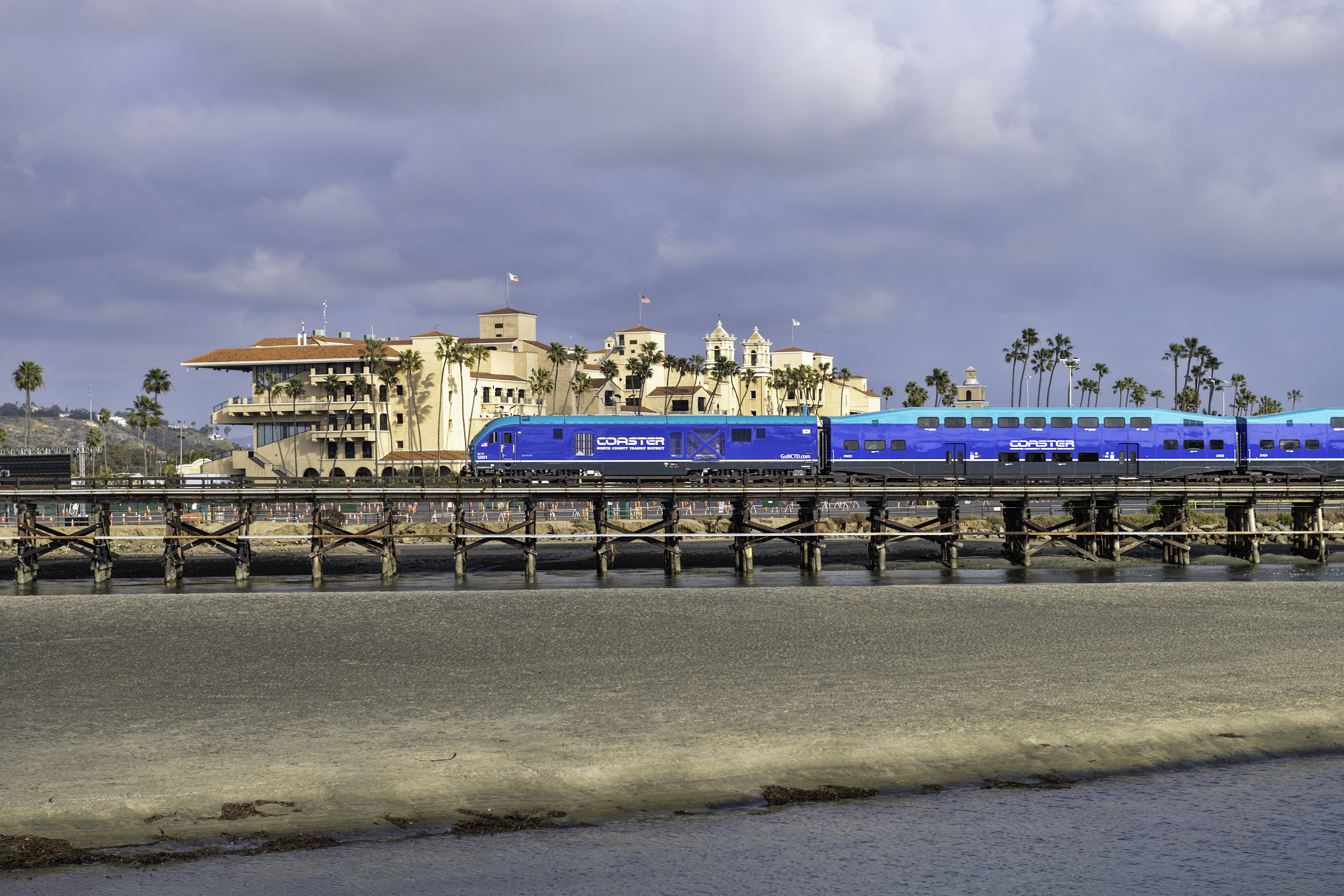The Real Winners of Rail Infrastructure Investments
By Matthew O. Tucker, Executive Director, North County Transit District
The Voice of OC article dated February 16, 2022, Industrial Freight Trains May Be the Real Winners of OC’s Coastal Commuter Project, mischaracterizes many important facts about rail operations in the corridor between Los Angeles and San Diego. More importantly, the article misses the point about who benefits from investments to improve rail infrastructure. The reality: well-functioning rail infrastructure brings economic, environmental, and societal benefits to the entire region it serves.
Rail improvements being considered and advanced in San Diego County and Orange County will help reduce operational bottlenecks, improve service frequencies, and expand the critical benefits our rail infrastructure provides. The improvements, which will be implemented with input from the public and as funding is secured over the coming decade, will support rail reliability and service enhancements for Amtrak, Metrolink, COASTER passenger service and BNSF freight operations.
The cost of these improvements is being paid by both the public and commercial users of the rail infrastructure. The Shared-Use Agreement between North County Transit District (NCTD), the San Diego Metropolitan Transit System, and BNSF, requires BNSF to share in cost of planning and implementing capital improvements along the corridor. In addition, BNSF pays NCTD an annual maintenance fee of approximately $6.8 million based on its current usage. That fee escalates annually based on the Consumer Price Index (CPI) and as freight frequencies increase. It helps support the passenger rail service in the corridor.
Benefits of Rail Infrastructure Improvements
The coastal rail corridor brings very real economic, environmental, and societal benefits to the region beyond enabling freight activity. The planned improvements will greatly enhance these benefits.
Regional Economic Benefits
NCTD’s most recent public benefit study showed its passenger and freight rail operations generate significant economic benefits for the region, producing $373 million in annual economic impact. Every dollar invested in NCTD produced $2.82 of economic activity. Those investments supported nearly four thousand jobs. These are tangible economic benefits for the whole region, in addition to the vital role the rail line plays in our region’s supply chain and our nation’s defense infrastructure.
Environment Impact
Rail operations are also an important part of federal, state, and local efforts to reduce vehicle miles traveled (VMT) and eliminate harmful emissions. NCTD supported passenger and freight rail operations reduced greenhouse gas emissions by 14,000 tons, saved 1 million gallons of fuel, and reduced traffic delays by 1.4 million hours in 2018. Every COASTER passenger rail passenger reduces VMT by 26.4 miles, making the rail service the San Diego region’s most effective VMT reducer and a critical part of the region’s climate action strategy.
Societal Benefits
High-quality mobility should be provided for all without respect to socio-economic status. Each public transportation mode is designed to meet a specific mobility need. Pre-pandemic, 78 percent of NCTD passenger rail riders used the service to get to work, making it an important connection to economic opportunity. Approximately 53 percent of NCTD’s commuter rail riders have a household income that is less than $99,999, and one-in-three earn below the median household income. Given the cost of living in San Diego and Orange Counties, to call rail riders affluent is misleading and disingenuous, particularly when those claims often come from residents of the richest communities in the nation. The goal of any public infrastructure should be to enable quality service for every member of the community it serves.
All public infrastructure – roads, airports, railroads, water, and sewer lines – is used by commercial, public, and private interests because that use furthers the overall public good. Likewise, taxpayers support a wide variety of private activities to accomplish a public goal. For example, according to the Los Angeles Times, by 2015 Elon Musk’s companies had received an estimated $4.9 billion in government subsidies to support the public good of advancing the adoption of zero emissions vehicles.
Rail improvements being considered and advanced in San Diego County and Orange County are about creating a prosperous future that includes a stable economy, improved mobility, reduced automotive vehicle miles traveled, less congestion, and fewer harmful emissions. Who wins with improved rail infrastructure? Everyone.
###

